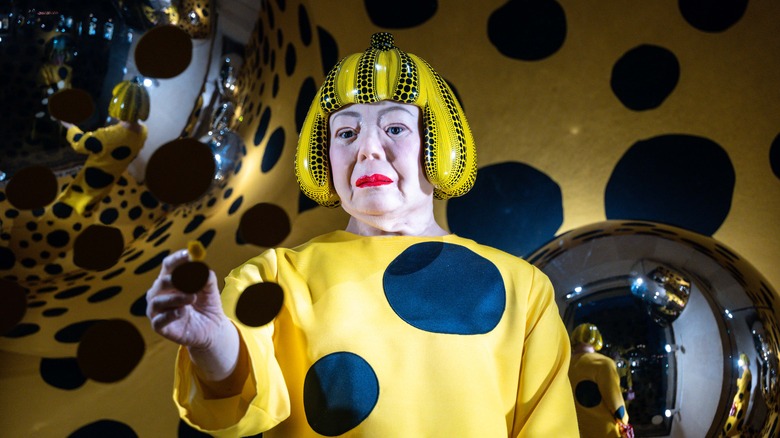An Immersive Art Exhibit In Phoenix Invites An Existential Crisis In An Infinite Space
In the world of contemporary art, Yayoi Kusama is a star — or rather, a glittering polka dot. Wherever her immersive, polka-dot-packed exhibitions open, tickets quickly sell out. She's so popular now that in 2023, at 95 years old, she became the world's top-selling contemporary artist. The honor was a long time coming and pays tribute to her decades of work, cult status, and life story of struggle — from breaking out of the bonds of her traditional Japanese upbringing and fighting against sexism to leading anti-war demonstrations and crafting a distinct aesthetic that turned herself into a work of art. To people attending her global exhibitions, it may simply be the large-scale, surreal worlds she creates that all but throw them down Alice's rabbit hole.
"You Who Are Getting Obliterated in the Dancing Swarm of Fireflies" — now in its 18th year on display at the Phoenix Art Museum in Arizona — presents a perfect example of Kusama's craft. Inspired by a Japanese folktale about someone surrounded by 10,000 fireflies in a field and the tradition of watching and catching fireflies, called hotaru gari, the exhibit immerses viewers in a dark void sparkling with thousands of tiny, twinkling lights as if they were suddenly shot deep into the galaxy. The effect also obliterates the self, transforming bodies into passing shadows that seem to merge with and emerge out of the darkness, shaping the light clusters into new constellations (or swarms of fireflies) as they go.
Creating and embracing infinity
The magical effect of Kusama's exhibition at the Phoenix Art Museum comes from a technique she's employed since 1965 called the "Infinity Mirror Room." The clue to the method is in the title. By covering the walls, floor, and ceiling with mirrors and other reflective surfaces (including water, on occasion), she is able to create an infinite space that she can then fill with light, sculptures, and other artwork to form a kaleido-scape. At the Phoenix Art Museum, these take the form of 200 suspended strands of LED lights that brighten, dim, and change color. It's a significant technical achievement, as well, and it required a full renovation in 2023 that also saw the addition of new interpretive text and educational displays about hotaru gari.
For Kusama, the infinity mirror room means more than the illusionary effect. It reflects her long struggle with mental health. As she explained to BOMB magazine, "My artwork is an expression of my life, particularly of my mental disease." These included hallucinations of light, auras, and dots that would subsume and obliterate her — an effect recreated in the Phoenix Art Museum. The instillation also inspires contemplation of our own eventual merging with infinity and beyond. It also echoes other big-scale works, including the world's largest and longest-running digital art exhibition in Times Square and the impressionist masterpiece at this immersive art exhibit's world tour, as well as the surreal landscapes created by the only museum with all inflatable art.

